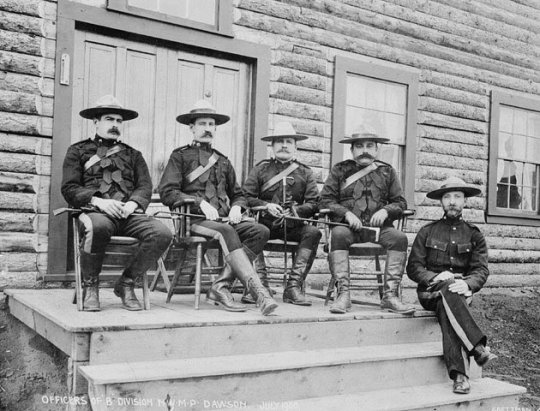#North-West Mounted Police
Text
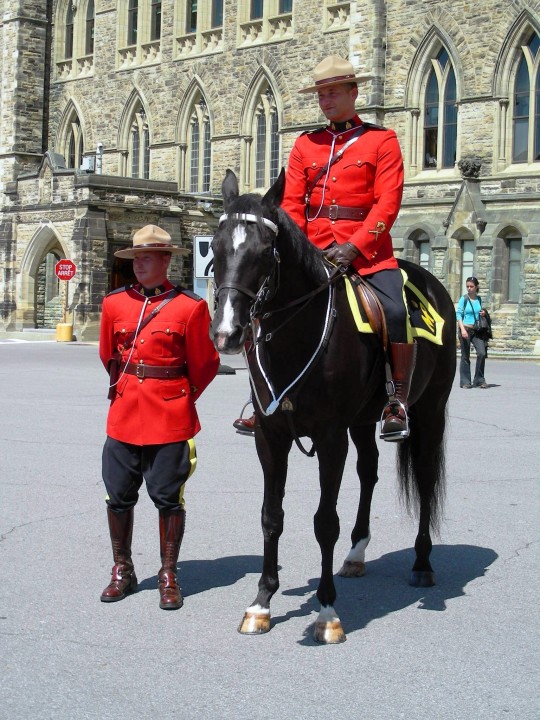
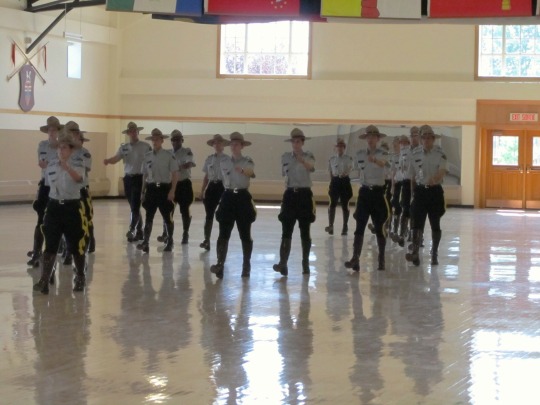
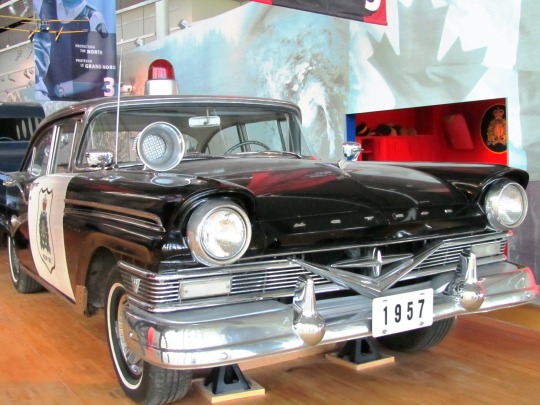


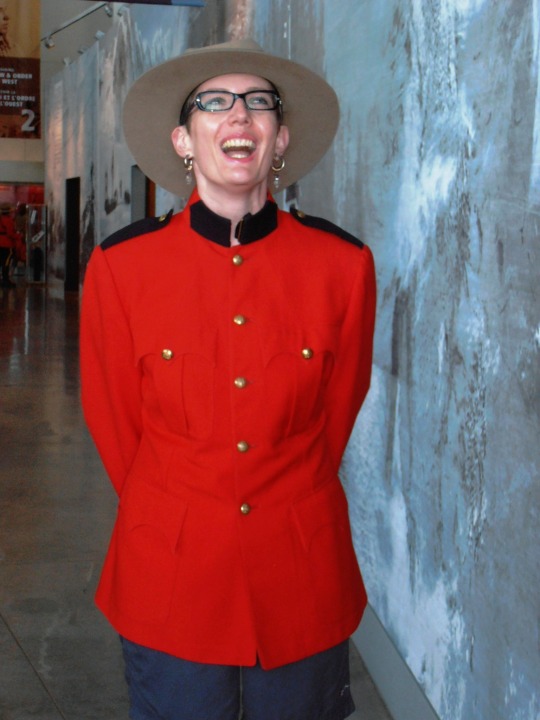
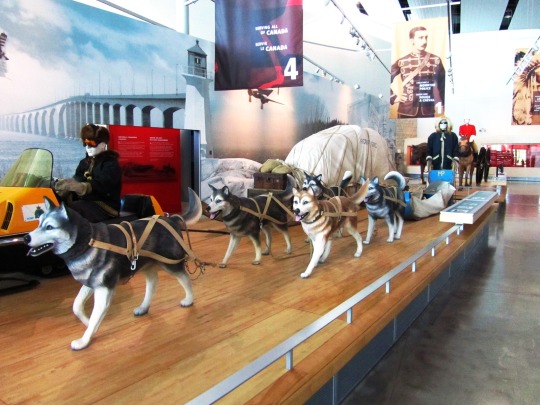

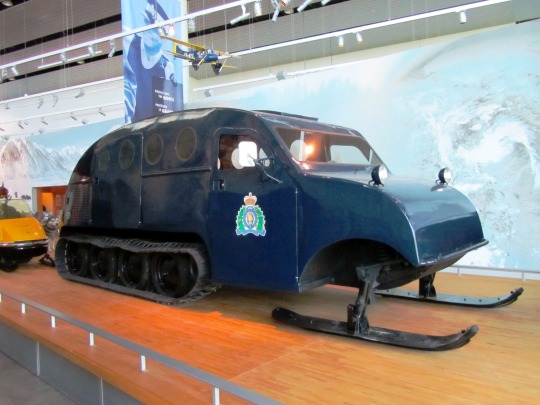


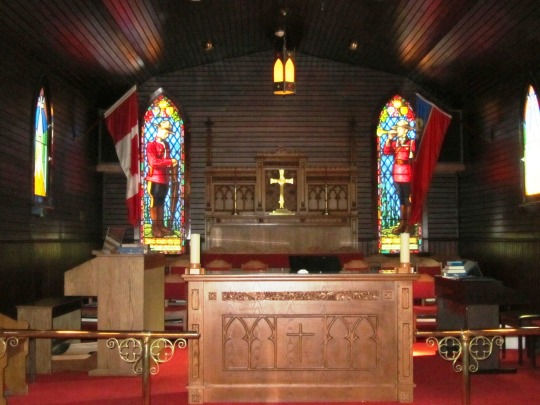
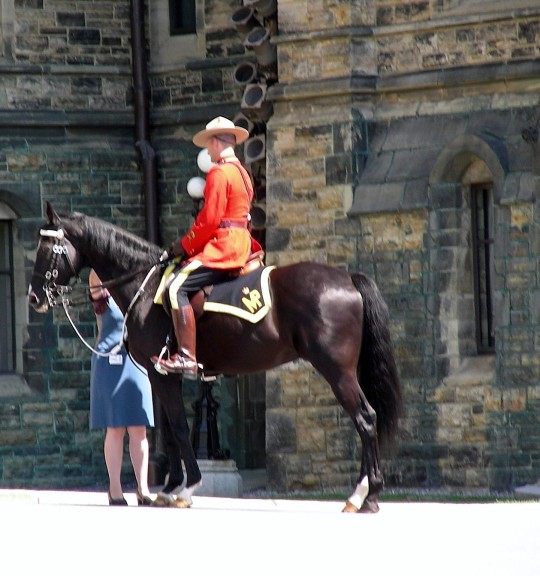
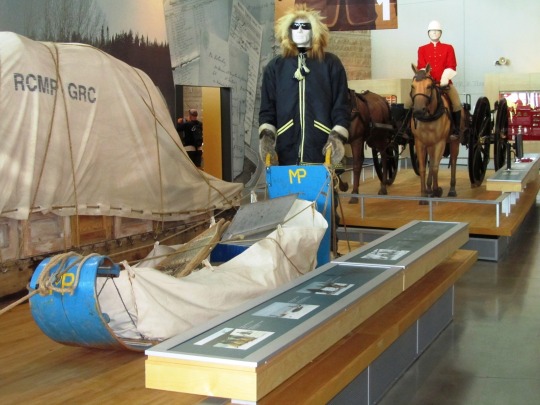

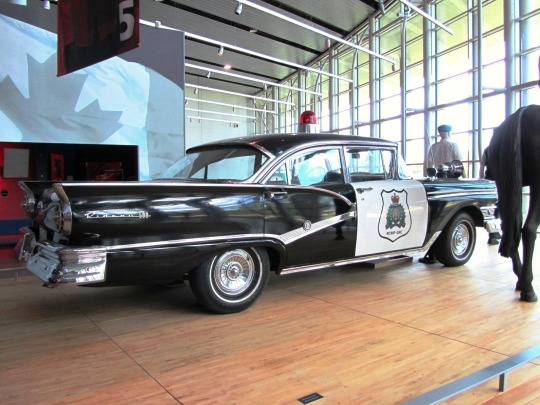

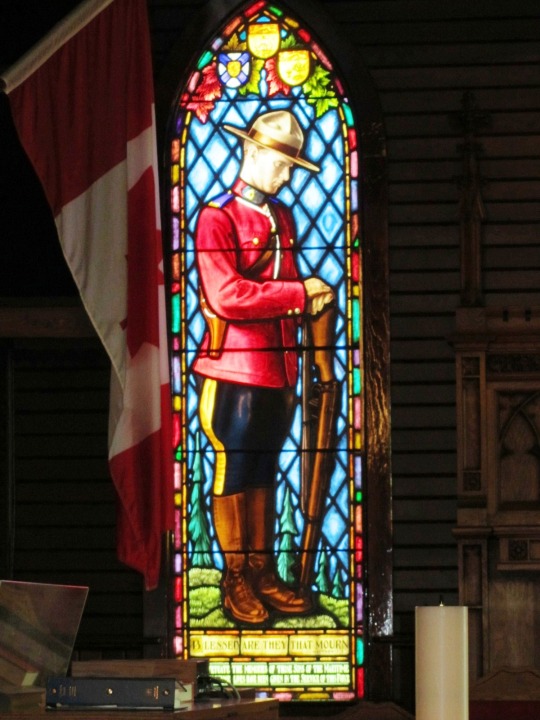
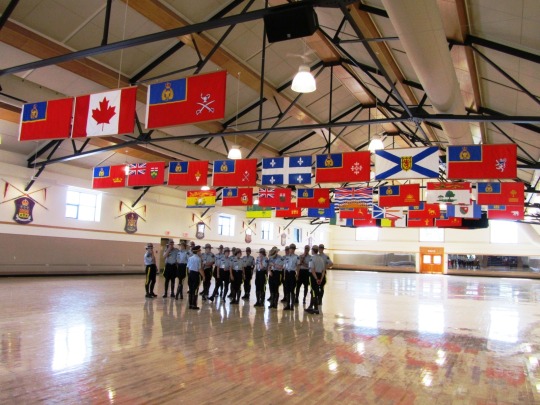
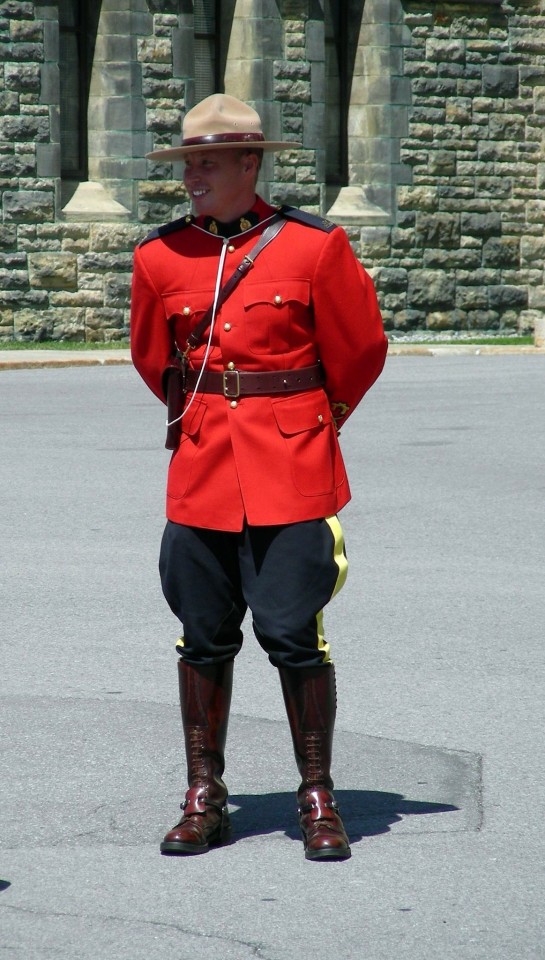
The Canadian Parliament established the North-West Mounted Police, the forerunner of the Royal Canadian Mounted Police on May 23, 1873.
#RCMP Heritage Centre#RCMP Depot#Regina#Saskatchewan#Canada#Red Serge#uniform#Mountie#original photography#summer 2012#travel#vacation#established#North-West Mounted Police#23 May 1873#RCMP#Royal Canadian Mounted Police#Ottawa#Parliament Hill#2009#indoors#outdoors#tourist attraction#landmark#cityscape#architecture#everything is Due South
2 notes
·
View notes
Text
Lets Talk Palestine (Instagram channel)
February 24, 2024
• 92 Palestinians killed, 121 injured in Gaza in past 24 hours
• Mass anti-government protests across Tel Aviv as Israeli’s have grown impatient to lack of a hostage deal and are calling for an election to see Netanyahu leave, showing mounting disdain for the government. Police have arrested 21 people and reports show the use of water cannons to disperse protestors
• Israeli air raid hits home housing displaced Palestinians in Rafah, killing 7 incl. 1 child
• Gaza ceasefire talks in Paris seems to be the most serious push in weeks; Israel’s war cabinet will convene to vote on the proposed outline & framework, indicating that something “tangible” was produced, especially as Israeli negotiators will be sent to to Qatar to continue talks. This doesn’t mean a ceasefire is close or that Israel has halted its plan to invade Rafah — these talks are unpredictable & subject to change
• Armed Israeli settlers assault 2 Palestinians at a make-shift checkpoint in Hebron (West Bank)
-
February 25, 2024
• 86 Palestinians killed, 142 injured in Gaza in past 24 hours
• Palestinians in northern Gaza are being starved as they’ve been cut off from aid as Israel’s relentless bombardment has prevented aid transport from southern Gaza; UNRWA hasn’t delivered any aid since Jan 23. Kamal Adwan Hospital (north) reports increased malnutrition: 1 in 6 kids are “severely malnourished” + hospitals struggling due to lack of fuel, medicine & ambulances
👆 Almost all aid in Gaza goes through Rafah crossing (Egypt) in the south but in recent weeks it has been almost totally halted, dropping from 200 trucks/day to 57, some days less than 20. 2,000+ trucks with enough to feed the entire population have piled up outside the crossing, prevented from entering by Israel. Meanwhile, Israelis have been protesting for weeks at Karem Abu Salem crossing, blocking aid trucks
• Netanyahu affirms Rafah ground invasion, saying a hostage deal would only somewhat delay the invasion
307 notes
·
View notes
Text


let's meet at the confluence (2024)
The New Gallery's Billboard 208
January 27th - June 30th, 2024
let’s meet at the confluence is a suggestion to all Calgarians to consider the site where the Elbow flows into the Bow river and question how settler-colonial history is privileged in public and site specific art. The piece references the different histories of gathering at the confluence of the waters, histories that long predate Calgary, Alberta. Despite histories of Indigenous uses of the land, queer cruising, sex work, trade, the arrival of the railway, and the North West Mounted Police, the site of the confluence is often overlooked and rarely used as the great meeting place that it once was. The simple map and text invites an audience of all backgrounds, Indigenous and non-Indigenous alike, to make their way from the The New Gallery along the Bow river to the confluence viewpoint and to consider their proximity to one another. The text is in English and the word confluence is repeated in multiple languages including Blackfoot, Cantonese, and Cree to honour the artist’s Michif roots and the specific location of the billboard on Treaty 7 and in Chinatown, pointing to the history of many different people living along the rivers.
#my work#this is on my professional website too but i like posting my work here teehee#riel text#contemporary art#art gallery#artist run centre#calgary alberta#mohkinstsis#métis#michif#métis art#indigenous art#indigenous contemporary art#illustration#confluence#bow river#elbow river#alberta#prairies#public art#billboard#blackfoot#cantonese#artist#art school#queer art
164 notes
·
View notes
Text
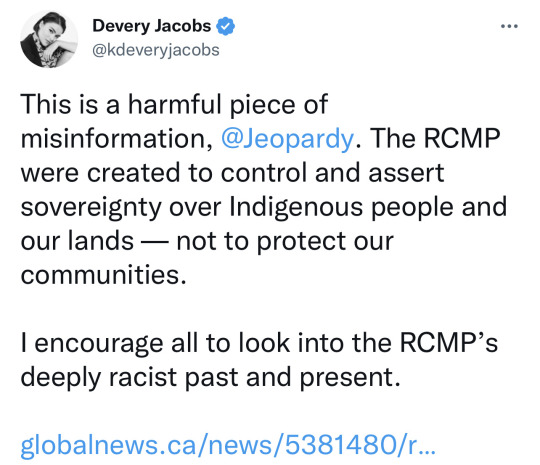

Whitewashing History 101: The police “cleaned up” those “sleazy” whiskey traders :)
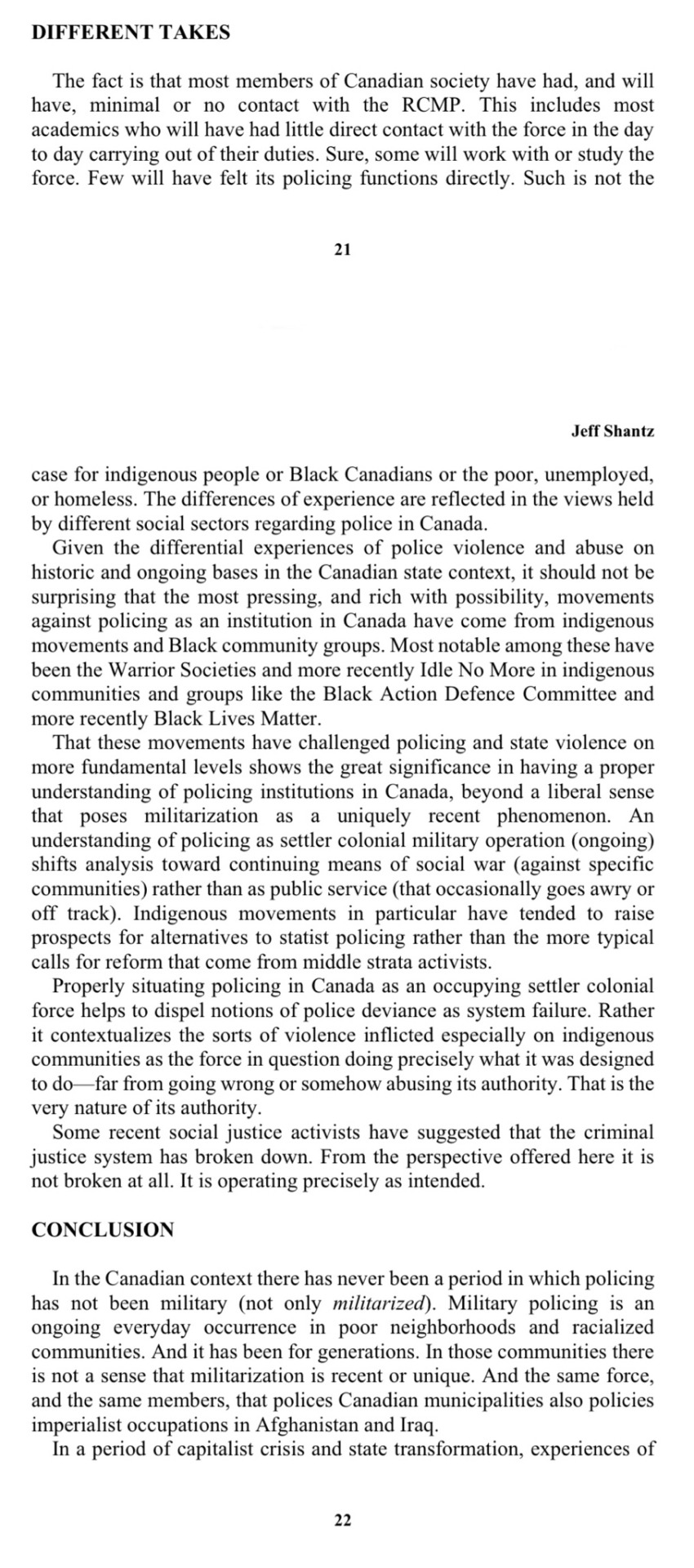
The RCMP Was Created To Control Indigenous People
Although the North-West Mounted Police didn’t become the RCMP proper until it absorbed the Dominion Police in 1920, its paramilitary origins are still highly visible in everything from its training depot to how it organizes its officers into troops, right down to the horse and the uniform, Hewitt says.
And while Canadians may like to position ourselves in opposition to the United States, citing their “even worse record in terms of treatment of Indigenous people,” Hewitt says that’s just a myth we tell ourselves to feel better.
The job of the Mounties “effectively, was to clear the plains, the Prairies, of Indigenous people,” he says. “Ultimately, they were there to displace Indigenous people, to move them onto reserves whether they were willing to go or not.”
History books, commissions, inquiries and public apologies reveal what happened next: Indigenous people who resisted were starved onto reserves. The federal government brought in the Indian Act and used Mounties to forcibly remove Indigenous children from their homes, placing them in residential schools rife with abuse.
(continue reading)
#politics#jeopardy#rcmp#canada#whitewashing history#settler colonialism#revisionist history#police#erasure#white supremacy#imperialism#residential schools
564 notes
·
View notes
Text
i just now learned about a recent case where a german man kidnapped and did unspeakable acts to two boys. one was german, one was a refugee. the first one was immediately treated as a missing case, but the second one was not because the cops were afraid the mother was hiding her son to avoid deportation. and the worst part is, that little boy was kidnapped in a government institution (lageso in berlin) where his mother went for help! its infuriating beyond belief.
racism is so deeply engrained in german institutions, its not funny. yet police refuses any reforms or real investigations and deny even the notion - despite mounting evidence - that there is an issue with systemic racism in german police. and we dont have an independent institution to control the cops, you know who investigates their failures and issues? other cops. and we all know how they stick together like literal shit.
but it also made me think about „missing white woman syndrome“. does anyone really care about an eastern european white woman who goes missing while being exploited in the west through prostitution, in the domestic field, nursing, or as a „mail bride“ dependent on her husband? does anyone care about a white woman in the usa going missing from a trailer park? does anyone care about a white woman who was homeless, mentally ill, drug addicted, disabled, impoverished, prostituted, or otherwise marginalised going missing? and do people not care about white men going missing?
and it also made me think about this current trend of oversimplifying and decontextualising racism. one thing i hope we all can agree on is that anti black racism is very persistent. i cant think of a single country where black people are treated preferably over other races, best case is to be treated equally as a black person, and even that is not the case in most countries. but this doesnt just apply to white majority countries. in japan or korea, or under the kafala system in the arabic gulf states, for example, black people are systematically discriminated against and exploited too. white people are also not the only ones guilty of colonialism and imperialism - albeit i dont want to minimise the scale of portugese, spanish, french, british/australin, german, dutch, belgian (neo)colonialism or the north american slave trade.
i dont know its just, everything always has to be put in context and looked at from an intersectional perspective but i feel a lot of people who fault white supremacy for everything dont do that. and dont get me wrong, white supremacy is the root of a lot of inequality and issues, but despite the name its not merely a black and white problem, its complex. for example, even if a roma or jewish person is white, neonazis dont consider them the same race as white people. or i remember my turkish professor once saying, „in turkey im considered white, but in germany im a person of colour“. because race is not just phenotype, it is also culture, nationality, location and ethnicity that matters for who is holding power and privilege.
meanwhile a lot of the same people will refuse to agree that sex matters. or claim that sex - which is a lot less ambiguous than race by the way and nobody argues that mixed race people prove that race is not real or doesnt matter the way they argue intersex people prove that sex is not real or doesnt matter - is a spectrum while chanting „black lives matter“. and i know that black communities do have that conversation about colourism and how whiteness is something even people of colour are supposed to „strive for“, which is why for example the harmful practice of bleaching your skin exists. so it is being acknowledged that race is a spectrum, but some of the same people who rightfully talk about black lives and how blackness is its own social category will call you a bigot for talking about female lives and how being female is a social category.
im not going anywhere with this, just some thoughts that came up regarding discussions on racism and sex and how they intersect too. feel very free to chime in especially as a person of colour obviously!
37 notes
·
View notes
Text
THIS DAY IN GAY HISTORY
based on: The White Crane Institute's 'Gay Wisdom', Gay Birthdays, Gay For Today, Famous GLBT, glbt-Gay Encylopedia, Today in Gay History, Wikipedia, and more … March 24


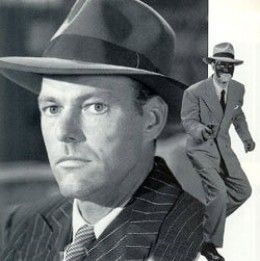
1914 – David Bacon (d.1943) was an American film actor.
He was born Gaspar Griswold Bacon, Jr. in Barnstable, Massachusetts, and his family was one of the prominent, politically active Boston Brahmin families. His father, Gaspar G. Bacon, was on the board of Harvard University, and later, in the 1930s, served as lieutenant governor of Massachusetts.
Born to a life of privilege and wealth, David Bacon graduated from Harvard. He summered with his family at Woods Hole on Cape Cod, where he became involved during the early 1930s with the "University Players," at West Falmouth. There he met then unknown performers James Stewart and Henry Fonda, with whom he later shared accommodations while he struggled to establish himself.
His acting career failed to progress, and he drifted for several years. He moved to New York City, where he was sponsored by a wealthy British patron, and although he once again failed to secure employment, he began to wear expensive clothes and jewelry, leading to speculation that he was acting as a gigolo.
He moved to Los Angeles, California where he met and married an Austrian singer, Greta Keller. In her later years, Keller disclosed that Bacon was homosexual, and that she was lesbian, and that their lavender marriage partly served as what she referred to as a "beard", allowing both of them to maintain a respectable facade in Hollywood, where they were both attempting to establish film careers.
In 1942, Howard Hughes met Bacon, and signed him to an exclusive contract, with the intention of casting him in The Outlaw (1943) as Billy the Kid. Bacon was screen-tested for the role and found unsuitable. Though Hughes later decided not to use Bacon in The Outlaw, replacing him with actor Jack Beutel, he kept Bacon to the terms of his contract, casting him in several smaller roles, usually as college boys.
Keller alleged that there was a homosexual relationship between Hughes and Bacon, and she blamed the alleged relationship for Bacon's being replaced. Hughes, however, was widely known as a womanizer and was often the target of unscrupulous claims to cash in on his money. Later, Hughes did lend out Bacon for a role in the Republic serial The Masked Marvel (1943). The serial was produced with a low budget, and marked a low point in Bacon's career, with Keller recalling that he was completely humiliated. Today it remains his best-remembered work.
On September 13, 1943, Bacon was seen driving a car erratically in Santa Monica, California, before running off the road and into the curb. Several witnesses saw him climb out of the car and stagger briefly before collapsing. As they approached he asked them to help him, but he died before he could say anything more. A small knife wound was found in his back – the blade had punctured his lung and caused his death. Keller, in an advanced stage of pregnancy, collapsed when she heard of her husband's death, and later her baby was stillborn.
When he died, Bacon was wearing only a swimsuit, and a wallet and camera were found in his car. The film from the camera was developed and found to contain only one image, that of Bacon, nude and smiling on a beach. Police theorized that the photograph had been taken shortly before his death by his killer. The case attracted publicity for a time and remains unsolved.


1930 – On this date the American actor Kenneth Nelson was born (d.1993). Born in Rocky Mount, North Carolina, Nelson appeared in several television series in the late 1940s, Captain Video and His Video Rangers and The Aldrich Family among them. He was cast in his first Broadway show, Seventeen, a musical adaptation of the Booth Tarkington novel that opened at the Broadhurst Theatre on June 21, 1951 and ran 182 performances.
Nelson found little work for the remainder of the decade, but in 1960, he was cast in an off-Broadway show The Fantasticks, which eventually became the world's longest-running musical with 17,162 performances. In 1962, he was hired to understudy Anthony Newley in Stop the World - I Want to Get Off when it transferred from the West End, eventually assuming the lead role when the star departed the show. From there, he went to another London import, Half a Sixpence, in 1965.
In 1968, Nelson accepted the lead in the controversial and groundbreaking off- Broadway production of The Boys in the Band, the first play to explore the milieu of Gay life in New York City in a graphically frank manner. He and the rest of the cast went on to appear in the 1970 film version directed by William Friedkin. Nelson and five others in the cast were Gay, and five of the six Gay actors died of AIDS.
1970 also saw Nelson return to Broadway in the lead role in Lovely Ladies, Kind Gentlemen, a musical adaptation of The Teahouse of the August Moon. It was a critical and commercial disaster, closing after only 19 performances. In 1974, he played a leading role in the highly successful revue Cole at London's Mermaid Theater.
He spent the rest of his career in small roles on television and in movies of little distinction. Nelson died in 1993 of AIDS-related complications in London.


1940 – Bob Mackie, American fashion designer, born; Best known for his costumes for Cher and for The Carol Burnett Show. Mackie is also known for his exclusive designs of dresses for high- priced Barbie dolls.
Two of Mackie's best-remembered creations had a humorous element. While working on the The Carol Burnett Show, he designed a "curtain dress" (complete with a curtain rod across the shoulders) that Carol Burnett wore in the "Went with the Wind" parody.

Mackie also designed the garish ensemble worn by Cher at the March 1986 Academy Awards: black stretch pants, a bejeweled loincloth, knee-high boots, a black chain-link top, and a huge feathered Mohawk headdress that was one and a half times taller than her head. Introduced by Jane Fonda with the words, "Wait'll you see what's gonna come out here," Cher was appearing as a presenter after what many considered an Oscar snub (Cher was not nominated for her performance in Mask). "As you can see," said Cher, "I did receive my Academy booklet on how to dress like a serious actress."
He lived with business partner Raymond Aghayan and had a gay son, Robin, who lived with him in the guest house behind the main house. Robin started doing drugs at 15 and in early 1989, was diagnosed with AIDS. With helpless grief, Mackie stood by as Robin died at the age of 33, March 1993. Aghayan died in 2011.

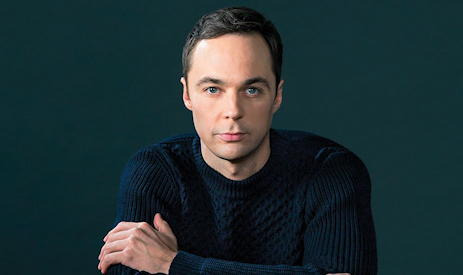
1973 – Jim Parsons is an American television and film actor. He is best known for playing Sheldon Cooper on the CBS sitcom The Big Bang Theory, with his performance often cited as a significant reason for the program's success.He has received several awards for his performance, including the Television Critics Association award for the highest individual achievements in comedy, the National Association of Broadcasters Television Chairman's Award for a significant breakthrough in a specific art discipline, two consecutive Emmy Awards for Outstanding Lead Actor in a Comedy Series and the Golden Globe Award for Best Actor in a Television Series Musical or Comedy.Parsons was born and raised in Houston, Texas. After playing the role of the Kola-Kola bird in a school production of The Elephant's Child at age six, Parsons was determined to become an actor. The young Parsons was heavily influenced by sitcoms, particularly Three's Company, Family Ties, and The Cosby Show. Parsons points to a role in Noises Off during his junior year as the first time "I fully connected with the role I was playing and started to truly understand what it meant to be honest on stage."
After graduating from high school, Parsons received an undergraduate degree from the University of Houston. He was prolific during this time, appearing in 17 plays in 3 years. He was a founding member of Infernal Bridegroom Productions, and regularly appeared at the Stages Repertory Theatre.
Parsons enrolled in graduate school at the University of San Diego in 1999. He was one of seven students accepted into a special two-year course in classical theater, taught in partnership with the Old Globe Theater. Program director Rick Seer recalled having reservations about admitting Parsons, saying, "Jim is a very specific personality. He's thoroughly original, which is one reason he's been so successful. But we worried, 'Does that adapt itself to classical theater, does that adapt itself to the kind of training that we're doing?' But we decided that he was so talented that we would give him a try and see how it worked out."
Parsons graduated in 2001 and moved to New York. Parsons has estimated that he auditioned for between 15 and 30 television pilots, but on many of the occasions when he was cast, the show failed to find a television network willing to purchase it. The exception came with The Big Bang Theory. After reading the pilot script, Parsons felt that the role of Sheldon Cooper would be a very good fit for him. Although he did not feel any sort of relationship with the character, he was enchanted by the dialogue structure, the way the writers "brilliantly use those words that most of us don't recognize to create that rhythm. And the rhythm got me. It was the chance to dance through that dialogue, and in a lot of ways still is."
in 2011, Parsons made his Broadway debut portraying Tommy Boatwright in the play The Normal Heart, for which he received a Drama Desk Award nomination. He reprised the role in the film adaptation of the play, and received his seventh Emmy nomination, this time in the category of Outstanding Supporting Actor in a Miniseries or a Movie. On January 29, 2015, it was announced that Parsons would be returning to Broadway as God in the new play An Act of God, which opened in May 2015.
Parsons lives in Los Angeles. In May 2012, The New York Times reported that Parsons is gay and at the time had been in a relationship Todd Spiewak for the last ten years. In October 2013, Parsons called their relationship "an act of love, coffee in the morning, going to work, washing the clothes, taking the dogs out—a regular life, boring love".


1981 – John K. Byrne is an American publisher, writer, and non-profit director. He is co-owner of Raw Story Media and AlterNet Media, which publish the online progressive political news sites RawStory.com and AlterNet.org respectively. He is also the founder and Executive Director of Prevention 305, a nonprofit focused on increasing access to HIV prevention drugs in the Miami, Florida area. Prior to Raw Story, he wrote briefly for the Boston Globe and McClatchy Newspapers and has been published in The Atlantic. He is also a published fiction writer.
Byrne was raised in a suburb of Boston, Massachusetts. His mother is a circuit judge of the Massachusetts District Courts and his father is a family physician.
Byrne attended Concord Academy and graduated from Oberlin College in 2003. At Oberlin College, he founded The Grape, which remains the college’s alternative student newspaper. He was also editor of the Oberlin Review, where he wrote an exposé about steroid abuse on the football team.
During college, Byrne worked as a stringer for The Boston Globe Northwest, a discontinued suburban section of the newspaper, and for McClatchy Newspapers as an intern in Washington, DC.
Byrne founded RawStory.com, which was first published on February 1, 2004. The site was originally conceived as a liberal version of the Drudge Report. In the early years, Raw Story focused on national security issues, American politics, and reporting on anti-gay political figures who were themselves closeted gays. Byrne founded Raw Story when he was 23. Byrne interviewed political figures and authors of the day, including former House Judiciary Chairman John Conyers and historian Howard Zinn. His reporting also focused on civil liberties, including articles critical of Presidents George W. Bush and Barack Obama's warrantless wiretapping program. In 2010, Byrne stepped down as editor of Raw Story. He remains the company's CEO.
Byrne and his business partner, Michael Rogers, outed as gay numerous politicians and political staff who voted or advocated against gay rights in the mid-2000s. Among the first was former Republican Congressman Ed Schrock. Rogers and Byrne reported that Schrock, who once disparaged gays in the military, had left two advertisements on a gay phone sex line. Schrock resigned August 31, 2004, after the recordings were revealed and posted online.
Byrne also reported on the campaign manager for President George W. Bush, Ken Mehlman. The site, along with Rogers, outed Mehlman in 2004. Mehlman was targeted because the Bush-Cheney re-election campaign issued anti-gay flyers in Ohio and because of the anti-gay marriage amendment Bush supported. A proxy denied that Mehlman was gay in 2005. Mehlman, however, admitted that he was gay in 2010, and eventually went on to campaign for gay marriage in New York.
In 2015, Byrne began advocating for the promotion of pre-exposure prophylaxis (PrEP) after a false positive HIV test. His first campaign on South Beach was covered by The Miami Herald, "I AM PrEP," in November 2015, which involved posters created for bars and clubs and brochures for health centers. Byrne wrote an article about his in a long-form piece for The Atlantic in December, 2015. CBS News 4 Miami covered his PrEP advocacy in March 2017. Byrne is also an at-large board member of Arianna's Center, a Ft. Lauderdale-based nonprofit focused on serving and empowering the transgender community in South Florida.


homosexuals at work (notice how different it is from "str8 world)
1989 – Montana enacts a sex offender registration law that covers consensual sodomy and gives a judge the power to limit the employment opportunities of those so designated.


20 notes
·
View notes
Text
A gang of sexual predators who committed horrific acts of abuse against at least eight young girls over the course of a decade have finally been jailed.
Roughly 24 members of the group, who operated in the North Kirklees area of West Yorkshire between 1999 and 2012, have received jail time totalling nearly 346 years.
Their arrests came about as the result of West Yorkshire Police’s Operation Tourway, which uncovered evidence of the rape, sexual abuse and trafficking of the group’s underage victims.
The prosecution was spread over a series of five trials that lasted two years, with reporting restrictions lifted on Friday after the last seven men were sentenced by Leeds Crown Court, MailOnline reports.
Police made their first arrests in November 2018, with all members of the gang officially charged by December 2020 and the first sentences being handed down in 2022.
Detective Chief Inspector Oliver Coates praised the gang’s victims for having come forward with evidence of the crimes they were subjected to when they were younger.
He said: ‘Their bravery in coming forwards and identifying their abusers has allowed us to take action against men whose offending and behaviour can only be described as abhorrent in the extreme.
‘Now that reporting restrictions have been lifted we can, for the first time, disclose full details of all those sentenced so far in what has been a long trial process.’
He added: ‘’Throughout the last two years juries have heard details of absolutely shocking offending committed against victims in these cases.
‘Some of these men received in excess of 30 years each for the multiple offences they committed and the unbelievably callous and degrading way in which they treated these then young girls.
‘Men such Asif Ali, who alone was found guilty of 14 rape offences, committed appalling sexual abuse on a scale which can barely be believed, and saw their young victims as defenceless commodities to be abused and traded at whim.’
He went on: ‘Far from being powerless however, those young women have instead fought back as adults and forced them to account for their crimes.
‘They displayed real courage and determination in giving evidence through what have been lengthy trials and supporting our investigations.
‘I hope they can find some closure and satisfaction in knowing they have enabled police and partners to mount a huge and highly difficult investigation which has taken sexual predators off our streets for years to come.’
9 notes
·
View notes
Text
"The first public reference to Klan activity in Canada appeared in the Montreal Daily Star, which announced the organization of a branch of ‘the famous Ku Klux Klan’ in Montreal in 1921, and reported that ‘a band of masked, hooded and silent men’ had gathered in the northwest part of the city behind the Mountain. In 1921, the Klan set up an office in West Vancouver, and British Columbia newspapers began to publish solicitations for Klan membership. KKK crosses were sighted burning across New Brunswick: in Fredericton, Saint John, Marysville, York, Carleton, Sunbury, Kings, Woodstock, and Albert. James S. Lord, the sitting member of the New Brunswick legislature for Charlotte County, becamea highly publicized convert. Later the Klan would infiltrate Nova Scotia, burning ‘fiery crosses’ on the lawn of the Mount Saint Vincent Convent, and in front of St John the Baptist Roman Catholic Church at Melville Cove near Halifax’s North-West Arm.
Reports of Klan activities surfaced in Ontario as well, where white American organizer W.L. Higgitt began a tour in Toronto in 1923. In the summer of 1924, a huge Klan gathering took place in a large wooded area near Dorchester. Cross-burning, designed to intimidate the village’s few Black residents, was carried out with great pomp and ceremony. In Hamilton in 1924, police arrested a white American named Almond Charles Monteith in the act of administering initiation rites to two would-be Klanswomen. Monteith was later charged with carrying a loaded revolver. Along with the revolver, police confiscated a list of thirty-two new members (‘some of them prominent citizens’), correspondence regarding thirty-six white robes and hoods, and a $200 invoice for expenses for ‘two fiery crosses.’ Monteith denied any involvement in recent cross-burnings on Hamilton Mountain, and was convicted on the weapons charge. The day after Monteith’s conviction, the arresting officer received a letter bearing a terse message: ‘Beware. Your days are numbered. KKK.’ Monteith’s conviction did nothing to put a crimp in the Klan’s membership drive. Between four hundred and five hundred members paraded through Hamilton in a KKK demonstration in the fall of 1929.
By June 1925 there were estimates of eight thousand Klan members in Toronto; headquarters were installed in Toronto’s Excelsior Life Building. The summer of 1925 witnessed hundreds of crosses burned across Chatham, Dresden, Wallaceburg, Woodstock, St Thomas, Ingersoll, London, and Dorchester. A group of hooded Klansmen tried to proceed en masse through the chapel of a London church to show their appreciation of the anti-Catholic address that had been delivered to the congregation. At a rally of more than two hundred people at Federal Square in London, J.H. Hawkins, claiming to be the Klan’s ‘Imperial Klailiff,’ proclaimed:
‘We are a white man’s organization and we do not admit Jews and colored people to our ranks. [ … ] God did not intend to create any new race by the mingling of white and colored blood, and so we do not accept the colored races.’
More than one thousand showed up at a similar rally in Woodstock.
At what was billed as the ‘first open-air ceremony of the Klan’ in Canada, two hundred new members were initiated at the Dorchester Fairgrounds in October 1925, in front of more than one thousand avid participants. The ‘first Canadian Ku Klux burial’ took place in London the next year, as robed and hooded Klansmen, swords at their sides and fiery crosses at hand, showed up to perform a ritual at the graveside of one of the Drumbo Klan. Ontario chapters sprang up in Niagara Falls, Barrie, Sault Ste Marie, Belleville, Kingston, and Ottawa. New headquarters appeared in a Vancouver mansion in 1925, and local chapters called ‘Klaverns’ sprang into existence in New Westminster, Victoria, Nanaimo, Ladysmith, and Duncan. Klan bonfires lit up Kitsilano Point. By 1928, the Vancouver Klan was soliciting signatures for a petition to demand that Asian Canadians be banned from employment on government steamships. A ‘Great Konklave’ was held in June 1927 in Moose Jaw, Saskatchewan, where an estimated ten thousand people stood by as hooded Klansmen burned a sixty-foot cross and lectured to them on the risks of racial intermarriage. Demanding an immediate ban on marriage between white women and ‘Negroes, Chinese or Japanese,’ the Klan proclaimed: ‘one flag, one language, one race, one religion, race purity and moral rectitude.’ The Saskatchewan group would later disaffiliate from Eastern Canada, to create an entirely separate western wing that was credited with signing up 25,000 members. In Alberta, ‘Klaverns’ came into existence in Hanna, Stettler, Camrose, Forestburg, Jarrow, Erskine, Milo, Vulcan, Wetaskiwin, Red Deer, Ponoka, Irma, and Rosebud. Alberta membership peaked between 5,000 and 7,000, but the Klan newspaper, The Liberator, produced out of Edmonton, purported to maintain a circulation of 250,000.
Nor were the activities of the Klan restricted to rallies and cross-burnings. In 1922, the Klan was linked to a rash of torchings that wreaked more than $100,000 damage upon three Roman Catholic institutions: the Quebec Cathedral, the rest-house of the Sulpician order at Oka, Quebec, and the junior seminary of the Fathers of the Blessed Sacrament in Terrebonne. In 1922, threatening letters signed by the Klan were delivered to St Boniface College in Winnipeg. Before the year was out, the college burned to the ground, causing the death of ten students. In 1923, similar letters, signed by the Klan, were sent to local police and Roman Catholic authorities in Calgary.
In Thorold, Ontario, the KKK intervened in a local murder investigation in 1922, issuing a warning to the town mayor to arrest an Italian man suspected of the crime by a specified date or face the fury of the Klan. The letter continued: ’The clansmen of the Fiery Cross will take the initiative in the Thorold Italian section. Eighteen hundred armed men of the Scarlet Division are now secretly scouring this district and await the word to exterminate these rats.’ In 1922, the Mother Superior of a Roman Catholic orphanage in Fort William received a letter signed ‘K.K.K.’ threatening to ‘burn the orphanage.’ The mayor of Ottawa was mailed a vitriolic letter, demanding he pay more attention ‘to Protestant taxpayers’ or the Klan would take ‘concerted action.’ Two Klansmen stole and destroyed religious paraphernalia from the tabernacle of the St James Roman Catholic church near Sarnia. The Ancaster Klan attempted to intimidate the African Brotherhood of America from erecting a home for ‘colored children and aged colored folk.’
The Belleville Klan visited the office of the Belleville Intelligencer, demanding that the manager dismiss a Catholic printer employed by the paper. The Sault Ste Marie Klan launched a concerted campaign to force the big steel mills to fire their Italian workers. A rifle bullet was fired at George Devlin during a wedding reception in Sault Ste Marie, with a blazing cross left behind to claim responsibility for the act. In 1924, local Klansmen surrounded the Dorchester home of a white man believed to be married to a Black woman. Threats were made to burn a cross outside the house of a white Bryanstown resident reputed to be involved with a Black woman. In 1927, several crosses were burned on the lawn of a white family believed to be running a brothel in Sault Ste Marie. The family was forced to flee their home.
Klan activities were also responsible for the removal of a francophone Roman Catholic postmaster in Lafleche, Alberta. The Alberta Klan promoted boycotts of Catholic businesses. The Drumheller KKK, which boasted a membership embracing forty of the town’s most prominent businessmen and mine owners, burned a cross on the lawn of a local newspaper columnist after he wrote a satirical comment about the Klan. Alberta Klansmen used bullets and flaming crosses to try to intimidate members of the Mine Workers Union of Canada during their bitter labour dispute in the Crow’s Nest Pass. Lacombe Klansmen wrote to the editor of the Alberta Western Globe after he opposed the Klan, threatening ‘severe punishment including the burning of his house and business to the ground.’ The same group kidnapped, and tarred and feathered a local blacksmith.
Throughout these activities, white police and fire marshals stood by, often present at the incendiary meetings and cross-burnings, content to reassure themselves there was ‘no danger.’ Despite the widespread evidence of lawlessness, Klan authorities tended to claim official disengagement whenever there was property damage or personal injury. Eschewing responsibility, they insisted that their organization had nothing to do with such events. Remarkably, the authorities largely respected these assertions of innocence, concluding that, without definitive proof that would tie named Klan officials to specific threatening letters or violent deeds, nothing further could be ascertained. Apart from the arrest and conviction of Almond Charles Monteith for possessing an unauthorized revolver, the only Klan event that attracted legal attention was the dynamiting of St Mary’s Roman Catholic Church in Barrie, Ontario, in 1926.
On the evening of 10 June 1926, a stick of dynamite shattered the stained-glass windows and blasted a four-foot hole through the brick wall of Barrie’s St Mary’s Roman Catholic Church. Buffeted about by the explosion, Ku Klux Klan flyers were scattered throughout the street, strewn among the brick, glass, and wooden debris. Barrie was a major stronghold of Ku Klux Klan activity, and organizers had drawn a crowd of two thousand to watch hooded Klansmen conduct a ritual cross-burning on a hill outside of Barrie several weeks earlier. At that ceremony, thirty-year-old William Skelly, a shoemaker who had emigrated one year earlier from Ireland, swore fealty to the tenets of the Klan, to uphold Protestant Christianity and white supremacy. He was initiated as a member in good standing. It was Skelly whom the police arrested for the bombing days later.
Skelly voluntarily admitted his Klan membership to the police, and confessed that, the night before the bombing, Klan members met to discuss ‘a job to be pulled off.’ There was a drawing of lots, and when Skelly drew the ‘Fiery Cross,’ he realized he was the designated man. Skelly claimed that he was intimidated by fellow Klansmen, who ‘made [him] drunk with dandelion wine and alcohol,’ and forced him to carry out the deed under threat of bodily harm. In fact, he told the police, he had joined the Klan in the first place only because he ‘had had considerable difficulty in securing steady work,’ and was told that, if he joined, the Klan ‘would look after him,’ finding him employment. Skelly also implicated two other Barrie Klan officials, Klan ‘Kleagle’ William Butler and Klan Secretary Clare Lee. Criminal charges of causing a dangerous explosion, attempting to destroy property with explosives, and possession of explosives were laid against all three white Klansmen.
This time the Ontario attorney general’s office issued an official statement that ‘no group can take into its own hands the administration of the law.’ The white deputy attorney general, Edward J. Bayly, became involved personally when he made arrangements for a leading white Toronto barrister, Peter White, KC, to prosecute the trio on behalf of the Crown. Skelly, Butler, and Lee were all found guilty at a jury trial in October, and sentenced to five, four, and three years, respectively. Officials from the Toronto headquarters of the Ku Klux Klan denied all responsibility, claiming throughout that Skelly ‘acted on his own initiative,’ despite all the evidence to the contrary."
- Constance Backhouse, Colour-Coded: A Legal History of Racism in Canada, 1900-1950. Toronto: University of Toronto Press, 1999. pg. 183-193.
#canadian history#racism in canada#ku klux klan#racism#reign of terror#anglo canadians#antisemitism in canada#settler colonialism in canada#academic quote#reading 2024#crime and punishment in canada#history of crime and punishment in canada#thorold#belleville#sault ste. marie#vancouver#toronto#hamilton#drumheller#calgary#kingston ontario#montreal#barrie
9 notes
·
View notes
Text
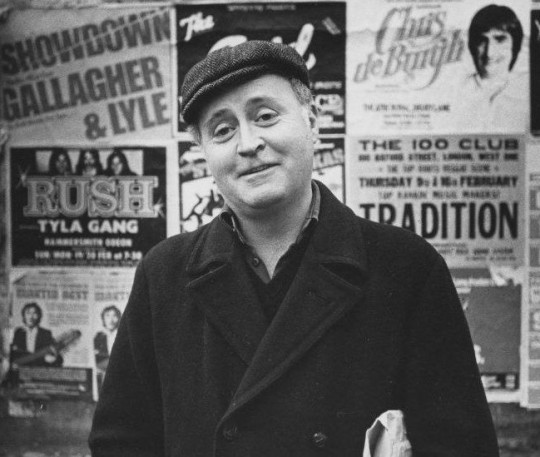
The battle to remove censorship from the British stage was fought primarily at the Royal Court theatre in London during the mid-1960s. The plays of Edward Bond, one of the most important British dramatists of the 20th century, who has died aged 89, were an essential part of that story and that struggle.
Bond had submitted plays to George Devine’s recently established English Stage Company at the Royal Court in 1958 and, as a result, was invited to join the theatre’s Writers’ Group. His first performed play, The Pope’s Wedding, was given in a production without decor on 9 December 1962, and Devine then commissioned a new play, which Bond submitted in September 1964.
That play, Saved, was presented privately for members of the English Stage Society in November 1965 after the lord chamberlain – the official censor to whose offices all new theatre plays had to be submitted – demanded cuts in the text. The play was the most controversial of its day, not just because of the explicitness of the sexual swaggering and dialogue, but because of a scene in which a baby is stoned to death in its pram.
The stays of middle-class propriety in the contemporary theatre had already been given a good vicious tug in the work of David Rudkin and Joe Orton, but this was something else. There was uproar in the theatre, and in the reviews, and a visit by the police. The theatre was hauled into court after an alleged minor breach of the club licensing laws, and many notable witnesses, including Laurence Olivier, spoke in the play’s favour. Penelope Gilliatt wrote in the Observer that the play was about brutishness, not brutish in itself: “The thing that makes Saved most painful to watch is the fact that the characters who won’t listen to other people’s desperate voices are in despair for lack of a listener themselves.”
Bond’s next play, Early Morning, was banned outright. It was a surreal fantasy, featuring Queen Victoria and Florence Nightingale as lesbian lovers, two conjoined twin princes, and cannibalism in heaven. Again, the vice squad paid a call, performances were cancelled and a private dress rehearsal arranged for the critics in April 1968.
By now the theatres bill was on its way in the House of Commons, becoming law in September. Plays were finally removed from the control of the lord chamberlain, who had held censorious sway over the nation’s entertainment since 1737. Violence, sex, political satire and nudity were bona fide subjects at last for the modern theatre.
William Gaskill, the artistic director of the Court in succession to Devine, mounted a Bond season in 1969 that established his reputation both in Britain and abroad, during a tour to Belgrade and eastern Europe. Saved was given 14 productions in West Germany and opened to acclaim in the Netherlands, Denmark, Japan, Czechoslovakia and the US.
This period was one of defiance at the Royal Court, and the experience marked everyone who worked there for life, none more so than Bond and Gaskill. Bond was acknowledged as the inheritor of Brecht’s legacy in the flintiness of his writing and the uncompromising artistic vision of his scenes and stage pictures.
He wrote many fine plays in the subsequent decade: his Lear (1971) was a majestic, pitiless rewriting of Shakespeare, with Harry Andrews unforgettably scaling a huge, stage-filling wall at the end; Bingo (1973) and The Fool (1975) drew chilling portraits of English writers – Shakespeare (played by John Gielgud at the Court – and by Patrick Stewart in a 2010 revival at Chichester) and the rural poet John Clare (Tom Courtenay) – at odds with their societies, driven respectively to suicide and madness; and The Woman (1978), the first new play to be produced on the National’s new Olivier stage, was an astounding, panoramic survey of Greek myths and misogyny.
Bond was born in Holloway, north London, one of four children. His parents were farm labourers in East Anglia and had come to London looking for work. Bond was evacuated during the second world war, first to Cornwall and later to live with his grandparents near Ely, Cambridgeshire. He attended Crouch End secondary modern school in London in 1946 and left when he was 15. “That was the making of me, of course,” he said, “you see, after that nobody takes you seriously. The conditioning process stops. Once you let them send you to grammar school and university, you’re ruined.”
He enjoyed the music hall and was impressed by Donald Wolfit as Macbeth at the Bedford theatre in Camden Town in 1948: “I knew all these people, they were there in the newspapers – this was my world.”
After school he worked as a paint-mixer, insurance clerk and checker in an aircraft factory before beginning his national service in 1953. He was stationed in Vienna and started to write short stories.
Once Saved had been performed and he knew he would always work in the theatre, he bought a house on the edge of a small village, Wilbraham, near Cambridge, and lived there contentedly with his wife, the German-speaking Elisabeth Pablé, a writer, whom he married in 1971 and with whom he collaborated on a new version of Wedekind’s Lulu based on some newly discovered jottings and manuscripts in the early 90s.
His early plays were often based in situations and societies he was familiar with, whatever their period setting, but Bond’s later work took on a more resonant, prophetic, some felt pompous, tone. Put simply, according to Richard Eyre and Nicholas Wright in Changing Stages, their 2000 account of the British theatre, Bond used to ask questions; now he gave answers.
He acquired a reputation as a rather remote guru, and his later, proscriptive epics about the failure of capitalism and the violence of the state were more often performed by amateurs than by the leading companies in Britain.
The Worlds (1979), for instance, was first given by amateurs in Newcastle, but its scope was immense, charting the collapse of a successful business operation riddled with strike action, terrorism, kidnappings and long speeches. In one of these, a terrorist defines the two worlds as one of appearance and one of reality. In the first, she says, there is right and wrong, the law and good manners. In the second, which controls the first, machines and power.
Before going into what he called voluntary exile from the British theatre establishment, Bond wrote the “pastoral” Restoration (1981) for the Court, an often witty inversion of a Restoration comedy, with Simon Callow in full flow as Lord Are, and Summer (1982) for the National, a comic, modern rendering of The Tempest set in the sunny Mediterranean.
Bond was a dapper, withdrawn man who could be intimidating, but disarmingly gnomic and self-deprecating when he was in the mood. Sympathetic interviewers could be treated to bilious attacks on directors such as Sam Mendes – whose 1991 revival of his 1973 comedy The Sea, a beautiful play of madness and dehumanisation in an Edwardian seaside town, he loathed – and Trevor Nunn (who, he said, turned the National Theatre into “a technicolour sewer”), though he never raised his voice and often dissolved into mischievous chuckling.
Even the collapse of eastern European socialism could not stem the flow of Bond’s writing. “Before, as a socialist writer,” he once told me, “you knew there was a framework, a system to which the play might eventually refer. But now, the problem of the last act has returned! And I was always a critic of the system to start with. That’s why I wrote my version of King Lear.”
More recently, you had to hunt pretty hard to find his new work. There was an intriguing season of six plays at the Cock Tavern in the Kilburn High Road, north London, in 2008, and several more performed by Big Brum, a theatre-in-education company in the Midlands, between 2012 and 2014.
Jonathan Kent directed a revival of The Sea at the Haymarket, starring David Haig and Eileen Atkins in 2008, while Sean Holmes provided the first London production of Saved in 27 years – still harrowing, more pertinent than ever – at the Lyric, Hammersmith, in 2011.
Following the example of Brecht, Bond was prolific in supplying his work with the extra apparatus of poems, prefaces and notebooks, though, unlike Brecht, a giant of an intellectual all-rounder in comparison, and a far superior poet, he was always better when restricting himself to stage dialogue.
He also wrote for films, including the screenplay for Nicholas Roeg’s Walkabout (1971), set in the Australian outback and starring Jenny Agutter and David Gulpilil, and the Nabokov adaptation Laughter in the Dark (1969), as well as contributing dialogue for Michelangelo Antonioni’s Blow-Up (1966) and Nicholas and Alexandra (1971).
At his best, he was a genuine poet of the stage, and exerted an enormous influence on at least two generations of theatre workers after him. It is possible that some of the unknown plays of his later, post-nuclear apocalyptic period will be ripe for assessment. The place of at least 10 of his earlier plays is secure in the national literature and they are certain to be revived. He remains much admired and often performed in France and Germany.
Elisabeth died in 2017.
🔔 Thomas Edward Bond, playwright and director, born 18 July 1934; died 3 March 2024
Daily inspiration. Discover more photos at Just for Books…?
4 notes
·
View notes
Text
The House of Mirrors (acotar modern au fic)
Illyria

Illyria is a country to the north of Prythian, its capital city is Windhaven.
To the north-west lies the famous Illyrian mountains known for attracting tourists and extreme sports fans.
To the south-east the country smooths out into grassy plains known as the Illyrian Steppes where their famous horses were bred and their historical skills as mounted cavalry were honed.
All Illyrian citizens are required to serve 3 years in mandatory state service. Men often join the military, police, waste and refuse services while women often take on elderly care, administration and the unique, government backed, public animal services which feed and care for the large stray and undomesticated animal population.
It is a well developed country despite most of its land going uninhibited and at least about 67% of Illyrians still live semi-nomadic lives
Key Illyrian characters include
Rhysand
Seren (his sister)
Ayana (his mother)
Cassian (his maternal cousin)
Devlon (Cassian's father)
Azriel (a mercenary with Illyrian prison tattoos; professionally known as the Shadow)
The Illyrian immigrant population in Prythian is the lowest among the Illyrian, Scythian, Bharti and Raskan collectives but lies slightly above the Hybernian's.
*
Irl Illyrians were greek but so were the Scythians so just to differentiate I'm adding stuff based on Mongolia. The city pictures are of Ulaanbaatar, the capital.
20 notes
·
View notes
Photo
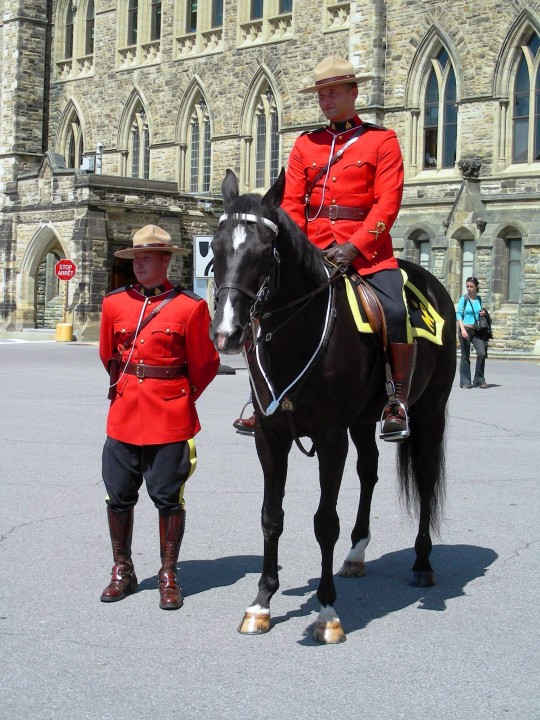





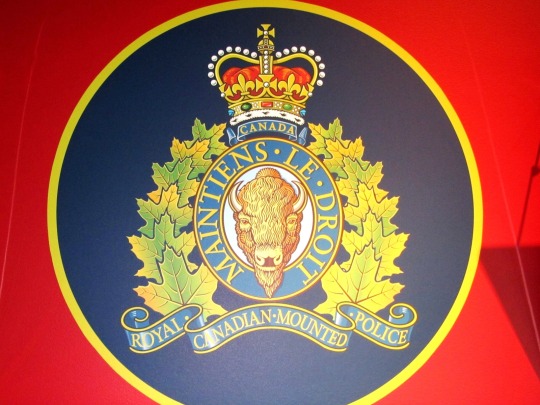


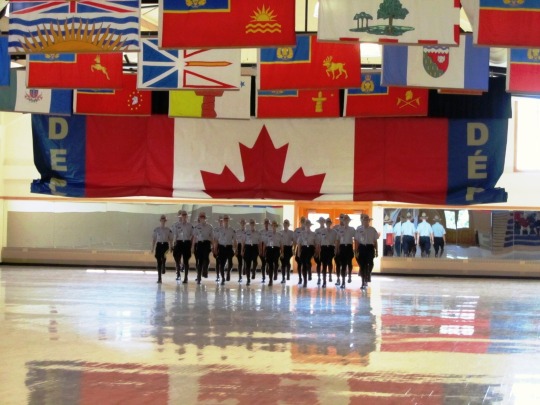
The Canadian Parliament established the North-West Mounted Police, the forerunner of the Royal Canadian Mounted Police on May 23, 1873.
#Ottawa#Ontario#Parliament Hill#2009#RCMP Heritage Centre#Mountie#Red Serge#Drill Hall#Regina#Saskatchewan#summer 2012#travel#indoors#outdoors#blue uniform#established#North-West Mounted Police#23 May 1873#150th anniversary#Canadian history#original photography#tourist attraction#landmark#Royal Canadian Mounted Police
2 notes
·
View notes
Text
youtube
Watch the 2024 American Climate Leadership Awards for High School Students now: https://youtu.be/5C-bb9PoRLc
The recording is now available on ecoAmerica's YouTube channel for viewers to be inspired by student climate leaders! Join Aishah-Nyeta Brown & Jerome Foster II and be inspired by student climate leaders as we recognize the High School Student finalists. Watch now to find out which student received the $25,000 grand prize and top recognition!
#ACLA24#ACLA24HighSchoolStudents#youtube#youtube video#climate leaders#climate solutions#climate action#climate and environment#climate#climate change#climate and health#climate blog#climate justice#climate news#weather and climate#environmental news#environment#environmental awareness#environment and health#environmental#environmental issues#environmental education#environmental justice#environmental protection#environmental health#high school students#high school#youth#youth of america#school
17K notes
·
View notes
Text
Palestine Summary. March 9 to March 11, 2024.
From "Let's Talk Palestine" (Instagram Broadcast Channel), quote.
March 9
• 82 Palestinians killed, 122 injured in Gaza in past 24 hours
• 2-month-old killed by starvation from dehydration and malnutrition in Kamal Adwan hospital + 3 children killed in al-Shifa hospital in the isolated northern Gaza, suffering the brunt of Israel’s block of aid. Bringing the total to 25 Palestinians killed by starvation
• Massacre in Nuseirat camp (central Gaza) kills 13+ Palestinians and many injured following Israeli destruction of a residential block, with the death toll expected to rise as many remain buried under rubble
🇸🇪🇨🇦 Sweden + Canada to resume UNRWA funding; Sweden to donate initial $20 million, with plans to allocate total of $400 million in 2024, while Canada set to resume funding in April
• 80% of homes in Gaza now “uninhabitable”, causing an estimated $30 billion in damages
• Anti-government protests in Tel Aviv calling for release of hostages + early elections, showing a growing disdain for the administration; met with clashes with the police
March 10.
• Gaza death toll surpasses 31,000, which doesn’t include the thousands buried under rubble
• Israeli forces deployed outside Al-Aqsa Mosque in Jerusalem attacked and beat Palestinians attempting to enter the mosque on eve of Ramadan, despite Israel’s claims of no additional restrictions on worshippers in first week of Ramadan. Previous years show increase in Israeli police raids & entry restrictions in Ramadan, with heightened restrictions a regular occurrence since Oct 7
• Israeli settlers establish outpost (unauthorized settlement illegal under Israeli law) in Ein al-Sakout in West Bank
🔻 Hamas claims drones dropped 2 missiles on Israeli command base in Beit Hanoun (north Gaza) + clashes in tunnel in Khan Younis (south Gaza) wounded & killed Israeli soldiers
🇺🇸 Biden says temporary Gaza seaport for aid will take 2 months to complete, despite criticism for US refusal to pressure Israel to permit aid entry through land crossings which is more immediate & efficient
March 11.
• 67 Palestinians killed, 106 injured in Gaza in past 24 hours
• As Ramadan begins with no ceasefire, Israel escalates attacks across Gaza as massacres in Gaza City killed 16 Palestinians in Sabra + 10 in Tal al-Hawa
• 2 children killed by malnutrition & dehydration in north Gaza as Israel continues obstructing aid distribution; a total of 27 killed by starvation
🌙 Gaza faces another level of hardship during Ramadan as fears mount following Israel’s increased attacks on Mosques + heightened police presence at entrance of Al-Aqsa Mosque in Jerusalem while Palestinians brace for expected abuse & restrictions
🇺🇸 Politico: Biden considers conditioning military aid to Israel for first time if they invade Rafah; in addition to giving Israel until March 25 to ensure compliance with international law on use of US weapons. Unconfirmed if this will actually happen, but is a new marker of the unprecedented strain on relations
• IOF abducts 25 Palestinians overnight in West Bank
March 11 reminder.
Hi community,
Today marks the first day of the sacred Islamic month of Ramadan in Palestine.
Historically, Israel has made Ramadan a nightmare — many Palestinians feel a creeping anxiety as Ramadan approaches, knowing that Israel usually clamps down more than usual (to understand why, read our post www.instagram.com/p/Cqq4wYDttSY/?igsh=enhjYWllNG4xam9u)
But this Ramadan has come after 5 months of Israel’s genocidal campaign on Gaza, as Palestinians wage a relentless struggle to survive today and liberate tomorrow.
So please, donate to Gazans at linktr.ee/fundsforgaza.
Make sure to boycott Israeli dates (and produce in general).
Be respectful and remember that this is not a normal time.
May we draw strength from our communities as we support Palestinians in Gaza and continue the fight to disrupt our governments’ complicity in this genocide. We can’t afford to stop.
(End Quote)
21 notes
·
View notes
Text

let's meet at the confluence (2024)
A little sneak peak of my work for The New Gallery and Billboard 208 that will be up from January 27th - June 28th, 2024. Images of it installed to come! <3
let’s meet at the confluence is a suggestion to all Calgarians to consider the site where the Elbow flows into the Bow river and question how settler-colonial history is privileged in public and site specific art. The piece references the different histories of gathering at the confluence of the waters, histories that long predate Calgary, Alberta. Despite histories of Indigenous uses of the land, queer cruising, sex work, trade, the arrival of the railway, and the North West Mounted Police, the site of the confluence is often overlooked and rarely used as the great meeting place that it once was.
The simple map and text invites an audience of all backgrounds, Indigenous and non-Indigenous alike, to make their way from the The New Gallery along the Bow river to the confluence viewpoint and to consider their proximity to one another. The text is in English and the word confluence is repeated in multiple languages including Blackfoot, Cantonese, and Cree to honour the artist’s Michif roots and the specific location of the billboard on Treaty 7 and in China Town, pointing to the history of many different people living along the rivers.
#my work#public art#alberta#calgary#art#billboard#text#text art#maps#cantonese#cree#métis#blackfoot#indigenous#contemporary art#indigenous art#confluence#bow river#site specific art#illustration#archival material#canadian art
8 notes
·
View notes
Text
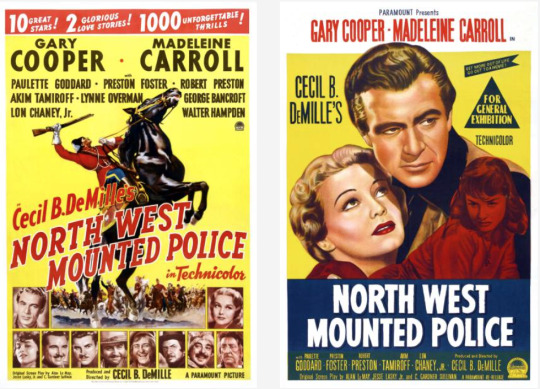
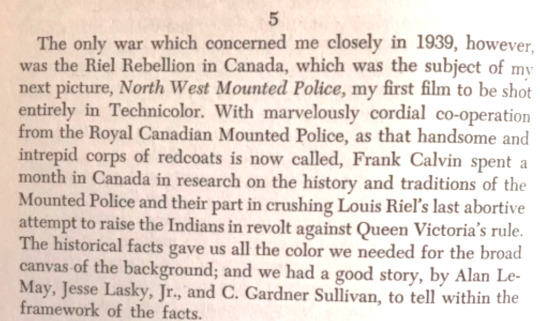



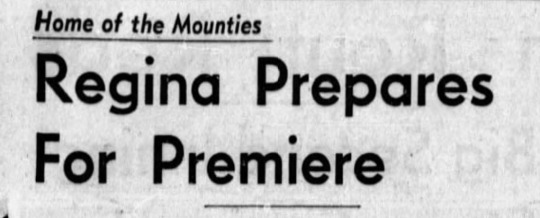
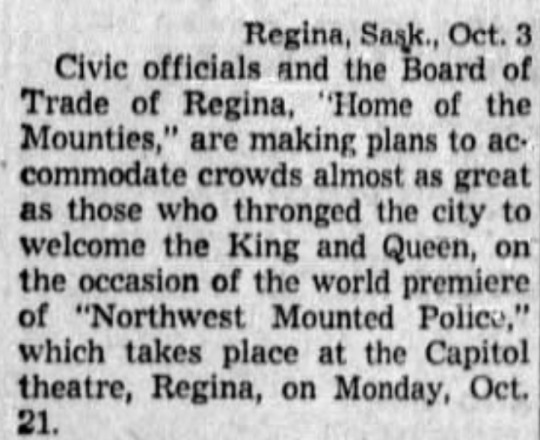
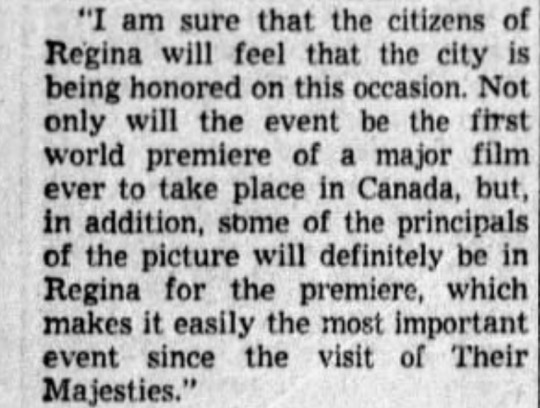
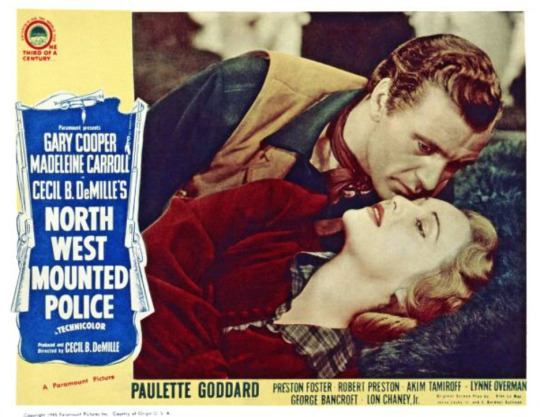
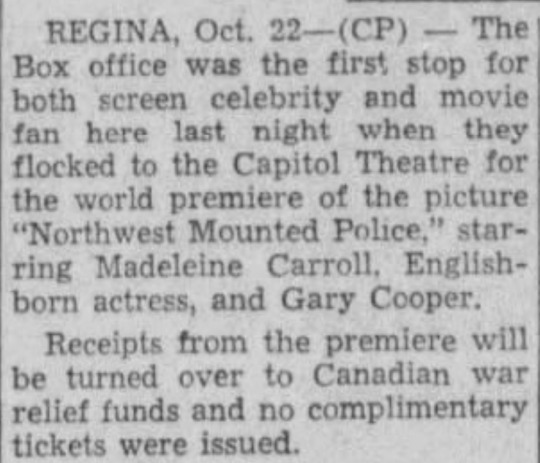


Cecil B. DeMille premiered North West Mounted Police (1940) in the province of Saskatchewan.
7 notes
·
View notes
Text

Paulette Goddard
Paulette Goddard (born Marion Levy; June 3, 1910 – April 23, 1990) was an American actress and socialite. Her career spanned six decades, from the 1920s to the early 1970s. She was a prominent leading actress during the Golden Age of Hollywood.
Born in New York City and raised in Kansas City, Missouri, Goddard initially began her career as a child fashion model and performer in several Broadway productions as a Ziegfeld Girl. In the early 1930s, she moved to Hollywood and gained notice as the romantic partner of actor and comedian Charlie Chaplin, appearing as his leading lady in Modern Times (1936) and The Great Dictator (1940). After signing with Paramount Pictures, Goddard became one of the studio's biggest stars with roles in The Cat and the Canary (1939) with Bob Hope, The Women (1939) with Joan Crawford, North West Mounted Police (1940) with Gary Cooper, Reap the Wild Wind (1942) with John Wayne and Susan Hayward, So Proudly We Hail! (1943) (for which she received a nomination for Academy Award for Best Supporting Actress), Kitty (1945) with Ray Milland, and Unconquered (1947) with Gary Cooper.
Goddard was noted as a fiercely independent woman for her time, being described by one executive as "dynamite". Her marriages to Chaplin, the actor Burgess Meredith, and the writer Erich Maria Remarque received substantial media attention. Following her marriage to Remarque, Goddard moved to Switzerland and largely retired from acting. In the 1980s, she became a notable socialite. Goddard died in Switzerland in 1990.
1 note
·
View note
Text
youtube
Watch the American Climate Leadership Awards 2024 now: https://youtu.be/bWiW4Rp8vF0?feature=shared
The American Climate Leadership Awards 2024 broadcast recording is now available on ecoAmerica's YouTube channel for viewers to be inspired by active climate leaders. Watch to find out which finalist received the $50,000 grand prize! Hosted by Vanessa Hauc and featuring Bill McKibben and Katharine Hayhoe!
#ACLA24#ACLA24Leaders#youtube#youtube video#climate leaders#climate solutions#climate action#climate and environment#climate#climate change#climate and health#climate blog#climate justice#climate news#weather and climate#environmental news#environment#environmental awareness#environment and health#environmental#environmental issues#environmental justice#environment protection#environmental health#Youtube
16K notes
·
View notes
